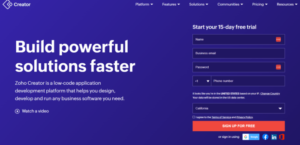
Beginning with full stack development roadmap, the narrative unfolds in a compelling and distinctive manner, drawing readers into a story that promises to be both engaging and uniquely memorable.
This roadmap serves as a vital guide for aspiring developers, outlining the skills and technologies needed to thrive in today’s tech landscape. Covering everything from web hosting to career opportunities, it highlights the essential stages of learning and the tools that will empower you to build robust applications.
Full Stack Development Roadmap Overview
The full stack development roadmap serves as a crucial guide for aspiring developers navigating the complex landscape of web development. It Artikels the essential skills and technologies needed to become proficient in both front-end and back-end development, bridging the gap between user experience and server-side functionality. Understanding this roadmap is significant not only for personal growth but also for meeting the demands of a rapidly evolving tech industry.The journey through full stack development typically unfolds in several stages, each designed to build upon the previous one, allowing for a comprehensive understanding of the entire development process.
Starting with the basics of HTML, CSS, and JavaScript, learners progressively dive into more advanced subjects such as server-side programming, databases, and deployment practices. This structured approach ensures that developers are well-equipped to tackle real-world problems and contribute effectively to projects.
Stages of Learning Full Stack Development
The learning path for full stack development encompasses various stages that collectively build a robust skill set. Each stage introduces new technologies and concepts that are essential for becoming a full stack developer.
- Foundational Knowledge: Start with HTML, CSS, and JavaScript to create simple web pages and understand the basic structure of web applications.
- Front-End Frameworks: Explore popular front-end frameworks like React, Angular, or Vue.js to enhance user interfaces and manage application state more effectively.
- Back-End Development: Learn server-side languages such as Node.js, Python, or Ruby to handle data processing and business logic.
- Databases: Get familiar with both SQL (e.g., PostgreSQL, MySQL) and NoSQL (e.g., MongoDB) database systems to understand data storage and retrieval.
- Version Control: Utilize Git for version control, allowing collaborative development and tracking of code changes throughout the project lifecycle.
- Deployment and Hosting: Understand how to deploy applications using platforms like Heroku, AWS, or DigitalOcean, ensuring that applications are accessible to users.
Key Technologies and Frameworks
The full stack development field is characterized by a diverse array of technologies and frameworks that are commonly used in the industry. Familiarity with these tools is vital for any full stack developer aiming for success.The importance of mastering these technologies cannot be overstated, as they play a pivotal role in the development process, from designing user interfaces to handling server-side logic.
- HTML, CSS, and JavaScript: The foundational trio for any web application, crucial for creating the structure, style, and interactivity of web pages.
- React: A widely used JavaScript library for building user interfaces, particularly single-page applications, known for its component-based architecture.
- Node.js: A JavaScript runtime that enables server-side development, allowing developers to build scalable network applications.
- Express.js: A web application framework for Node.js that simplifies the development of web servers and APIs.
- MongoDB: A NoSQL database that provides flexibility in data storage, ideal for applications that require rapid iteration.
- PostgreSQL: A powerful, open-source relational database that supports complex queries and transactions, making it suitable for data-heavy applications.
- Docker: A platform for developing, shipping, and running applications in containers, ensuring consistency across different environments.
- Git: A version control system that helps track changes in code, facilitating collaboration among developers.
Web Hosting and Domain Names
Choosing the right web hosting service and a domain name is crucial for the success of any web application. This process not only affects the performance and availability of your application but also impacts user experience and . A well-selected domain name can enhance brand recognition, while the right hosting service ensures reliability and speed for your users.The selection process for web hosting and domain names involves evaluating your project’s requirements and understanding various hosting options available in the market.
A domain name should be unique, easy to remember, and relevant to the application, while the hosting service should align with the anticipated traffic, technical needs, and budget.
Web Hosting Options
When considering hosting options, developers typically choose between shared hosting, Virtual Private Servers (VPS), and dedicated hosting. Each option has its own advantages and is suitable for different types of projects.
- Shared Hosting: Ideal for small websites and beginners, shared hosting allows multiple websites to share a single server’s resources. This is cost-effective and easy to set up but can lead to performance issues if one site consumes excessive resources.
- VPS Hosting: VPS hosting provides a middle ground between shared and dedicated hosting. It offers dedicated resources within a shared environment, allowing for greater control and customization. This option is suitable for medium-sized applications with moderate traffic.
- Dedicated Hosting: Offering complete control over a dedicated server, this option is best for large businesses and applications requiring high performance and security. It comes at a higher cost but provides the best resources and performance reliability.
Configuring DNS Settings for a New Domain
Configuring DNS settings is essential for ensuring that your domain name points to the correct hosting server. Proper DNS management facilitates the accessibility of your web application.To configure DNS settings, follow these steps:
- Access Domain Registrar’s DNS Management: Log in to your domain registrar’s control panel where you purchased the domain name.
- Locate DNS Settings: Find the DNS settings section, which typically includes options for managing A records, CNAME records, and other DNS entries.
- Add A Record: Create an A record that points your domain to the IP address of your hosting server. This is crucial for directing visitors to your application.
- Set Up CNAME Records (if necessary): For subdomains or additional services (like www), configure CNAME records to ensure they resolve correctly to your main domain.
- Save Changes: After making the necessary adjustments, save your changes. DNS propagation can take from a few minutes to 48 hours, during which your domain will become accessible at its new location.
“A well-configured DNS can significantly improve the speed and reliability of your web application.”
Web Design and Development Principles
To create an effective web application, understanding the foundational design principles is key. These principles enhance user experience by ensuring that users can navigate the site with ease, find information quickly, and enjoy their overall interaction with the web application. This section will explore these essential principles, the significance of responsive design, and best practices to adhere to in web development.
Essential Design Principles for User Experience
An attractive and functional web design has several principles that greatly influence user experience. These principles include:
- Consistency: Maintaining uniformity in design elements such as colors, fonts, and layout across all pages enhances usability and builds user trust.
- Hierarchy: Using visual hierarchy helps guide users through the content. This can be achieved through size, color contrast, and spacing to denote importance.
- Feedback: Providing immediate feedback to user actions, such as button clicks or form submissions, reassures them that their input has been received.
- Accessibility: Designing for accessibility ensures that all users, including those with disabilities, can navigate and interact with the website effectively.
Importance of Responsive Design
Responsive design is critical in today’s multi-device world, as it allows web applications to adapt seamlessly to various screen sizes. Implementing responsive design involves utilizing CSS frameworks such as Bootstrap or Foundation, which provide pre-defined classes and components that streamline the process. Key aspects of responsive design include:
- Fluid Grids: Use percentages instead of fixed widths, allowing elements to resize relative to the viewport.
- Media Queries: These CSS techniques apply different styles based on device characteristics, such as width, height, and orientation.
- Flexible Images: Images should scale within their containing elements to prevent overflow and distortion.
Best Practices in Web Development
Adhering to best practices in web development is essential for ensuring website performance and accessibility. Implementing these practices contributes to a better user experience and improves search engine rankings. Consider these key points:
- Optimize Performance: Minimize HTTP requests, compress images, and leverage browser caching to enhance load times.
- Semantic HTML: Use HTML elements according to their intended purpose to improve accessibility and .
- Cross-Browser Compatibility: Always test your web application on multiple browsers and devices to ensure consistent functionality.
- Use of ARIA Roles: Implement Accessible Rich Internet Applications (ARIA) roles to provide additional context for screen readers.
“Design is not just what it looks like and feels like. Design is how it works.” – Steve Jobs
Making Money Online as a Developer
As a full stack developer, the opportunities to monetize your skills are diverse and evolving. Whether you’re considering freelancing, a full-time position, or creating your own digital products, understanding the various pathways can help you make informed decisions about your career and income potential.
Monetization Strategies for Full Stack Developers
There are several strategies that developers can employ to make money online. Below are some of the most popular methods:
- Freelancing: Many developers choose to work on a project basis, offering their services to clients. This allows flexibility and the potential for higher hourly rates.
- Full-Time Employment: Joining a tech company as a full-time employee provides salary stability and benefits, though it may come with less flexibility.
- Creating Digital Products: Developers can create and sell web applications, plugins, or e-books, capitalizing on their expertise to generate passive income.
- Teaching and Consulting: Sharing knowledge through online courses or consulting can be lucrative. Many platforms allow developers to monetize their skills by teaching others.
Benefits and Downsides of Freelance Work versus Full-Time Employment
When deciding between freelancing and full-time employment, it’s important to weigh the pros and cons of each option.
Freelancing offers flexibility and the potential for higher income, while full-time employment provides stability and benefits.
The following points highlight the key factors to consider:
- Flexibility: Freelancers can set their own schedules and choose their projects, whereas full-time jobs often have fixed hours and commitments.
- Income Variability: Freelancers may experience fluctuating income depending on the number of clients and projects, while full-time employees typically enjoy a consistent paycheck.
- Benefits: Full-time positions usually come with health insurance, retirement plans, and paid time off, which freelancers must secure independently.
- Job Security: Full-time employment often offers more security against economic downturns compared to the uncertainty that can accompany freelancing.
Creating and Selling Digital Products
Developers have the opportunity to create various digital products that can generate ongoing revenue. This includes web applications, software solutions, and e-books.To succeed in this endeavor, consider the following steps:
- Identify a Niche: Research market needs and select a niche that aligns with your skills and interests. This helps in targeting the right audience.
- Build a Minimum Viable Product (MVP): Start with a basic version of your product that addresses core user needs. Gather feedback and iterate based on user input.
- Market Your Product: Utilize social media, content marketing, and to reach a wider audience. Creating a landing page can help in capturing leads.
- Sell on Multiple Platforms: Consider listing your products on platforms like Gumroad, Etsy, or your own website to maximize exposure.
Engaging in these strategies not only enhances your financial prospects but also helps you develop skills that are highly valued in the tech industry.
Programming Languages and Tools
Full stack development encompasses a variety of programming languages and tools that allow developers to build and maintain both the front-end and back-end of applications. Understanding these languages and tools is crucial for creating efficient, scalable, and maintainable applications. Here, we delve into the most popular languages used in full stack development, the significance of version control systems, and guidance for setting up an effective development environment.
Popular Programming Languages
Several programming languages have become staples in full stack development. Each of these languages serves a unique purpose and is selected based on the specific requirements of the project. Below are some of the most notable languages along with their use cases:
- JavaScript: Essential for front-end development, JavaScript enables interactive web pages and is increasingly used on the server-side with Node.js. Its popularity stems from its versatility and the vast ecosystem of frameworks like React and Angular.
- Python: Known for its simplicity and readability, Python is often used for back-end development. Frameworks like Django and Flask facilitate rapid application development and are popular among startups and large enterprises alike.
- Ruby: Ruby, particularly with the Ruby on Rails framework, is loved for its convention over configuration approach, making it easy to build web applications quickly.
- Java: A strong choice for enterprise-level applications, Java is valued for its portability and performance. Frameworks like Spring enhance its capability for back-end development.
- PHP: While sometimes criticized, PHP powers a significant portion of the web and is especially effective for server-side scripting, particularly when combined with frameworks like Laravel.
Version Control Systems
Version control systems are essential for managing changes to code over time, enabling multiple developers to work collaboratively without overwriting each other’s contributions. Git, the most widely used version control system, allows developers to track changes, revert to previous states, and manage code across branches effectively. The significance of Git in collaborative projects cannot be overstated; it streamlines the workflow and ensures that teams can coordinate their efforts seamlessly.
“Git is a tool that allows you to keep track of your project’s progress, making teamwork smooth and more organized.”
Setting Up a Development Environment
Creating an efficient development environment is key to enhancing productivity. This involves selecting an Integrated Development Environment (IDE) or text editor that suits your workflow. Below are some recommended IDEs and text editors used by developers:
- Visual Studio Code: A popular text editor known for its versatility, support for extensions, and built-in Git commands.
- IntelliJ IDEA: An IDE favored for Java development that also supports a range of other languages. It offers intelligent code completion and advanced debugging tools.
- Sublime Text: A lightweight text editor appreciated for its speed and user-friendly interface, suitable for various programming languages.
- Atom: An open-source text editor developed by GitHub, offering a customizable interface and collaborative features.
To set up a development environment, follow these steps:
- Install the chosen IDE or text editor.
- Configure the necessary extensions or plugins for the languages and frameworks you will be using.
- Set up a local server environment, such as XAMPP or Docker, if back-end development is involved.
- Familiarize yourself with terminal commands and integrate Git for version control.
By establishing a robust development environment, developers can optimize their coding experience and enhance their project workflows.
Security in Full Stack Development
In the ever-evolving landscape of web applications, security remains a critical pillar that developers must prioritize. With the increasing number of cyber threats, understanding common vulnerabilities and implementing robust security measures is essential for protecting both the application and its users. This section dives into the prevalent security issues in web development, the necessity of HTTPS and SSL certificates, and Artikels a framework for performing security audits.
Common Security Vulnerabilities in Web Applications
Web applications are often targets for malicious attacks. Some of the most common vulnerabilities include:
- SQL Injection: Attackers exploit vulnerabilities in application code to execute arbitrary SQL queries, leading to data breaches. Mitigation involves using parameterized queries and prepared statements.
- Cross-Site Scripting (XSS): Malicious scripts are injected into webpages viewed by users. To combat this, developers should sanitize user input and use Content Security Policy (CSP) headers.
- Cross-Site Request Forgery (CSRF): This vulnerability tricks users into submitting requests without their consent. Implementing anti-CSRF tokens can help prevent such attacks.
- Insecure Direct Object References (IDOR): This occurs when applications expose internal object references. Proper authorization checks before accessing sensitive data are vital for prevention.
Importance of Implementing HTTPS and SSL Certificates
HTTPS is a crucial security measure that ensures encrypted communication between the user’s browser and the web server. The implementation of SSL certificates provides several key benefits:
- Data Encryption: SSL encrypts sensitive information, making it difficult for attackers to intercept data during transmission.
- Authentication: SSL certificates verify the legitimacy of a website, helping users trust the site they are interacting with.
- Benefits: Search engines prioritize HTTPS-enabled sites, potentially improving search rankings and visibility.
“Not implementing HTTPS increases the risk of data breaches and diminishes user trust.”
Framework for Conducting Security Audits on Web Applications
Conducting regular security audits is essential for maintaining the integrity of web applications. A comprehensive framework includes the following steps:
- Asset Identification: Catalog all assets, including databases, servers, and application components.
- Threat Modeling: Analyze potential threats and vulnerabilities specific to the application’s architecture and data.
- Security Testing: Utilize automated tools and manual testing to identify vulnerabilities like XSS, CSRF, and SQL Injection.
- Review Security Policies: Evaluate existing security policies and ensure they align with current best practices.
- Implement Remediation: Prioritize and address identified vulnerabilities, documenting each step taken to mitigate risks.
- Continuous Monitoring: Establish ongoing monitoring processes to detect new vulnerabilities as they emerge.
Emerging Technologies and Trends
The landscape of full stack development is evolving rapidly, influenced by a convergence of emerging technologies and industry trends. These advancements not only streamline the development process but also enhance the capabilities of applications. As a developer, staying updated with these trends can significantly benefit your projects and career trajectory.
Influence of AI and Machine Learning
Artificial Intelligence (AI) and machine learning (ML) are reshaping full stack development by automating complex tasks and enhancing user experiences. With the integration of AI algorithms, developers can create smarter applications that learn from user interactions and adapt accordingly. For instance, chatbots powered by natural language processing (NLP) can provide instantaneous support, reducing the need for manual intervention.
Automated Testing
AI tools can rigorously test applications by simulating user behavior, identifying bugs faster than traditional methods.
Personalization
ML algorithms analyze user data to deliver tailored content and recommendations, improving user satisfaction and engagement.
Predictive Analytics
Developers can implement predictive models that forecast trends and user behavior, informing design decisions and feature development.
Role of Cloud Computing
Cloud computing has revolutionized how applications are deployed and scaled. By leveraging cloud services, developers can ensure high availability and flexibility in their applications. Modern cloud platforms, such as AWS, Azure, and Google Cloud, provide robust infrastructure that supports continuous integration and deployment (CI/CD) practices.
Scalability
Applications can easily scale resources up or down based on demand, accommodating fluctuating user loads without downtime.
Cost Efficiency
Pay-as-you-go pricing models allow developers to optimize costs by only using the resources they need at any given time.
Global Accessibility
Hosting applications in the cloud enables them to be accessed from anywhere, fostering collaboration and remote work.
Impact of Modern Frameworks
Frameworks like React and Angular have transformed the way developers build applications, improving efficiency and promoting best practices. These tools offer pre-built components and robust ecosystems that expedite development cycles.
Component-Based Architecture
React’s component-driven structure allows developers to create reusable UI elements, reducing duplication of code and enhancing maintainability.
Reactive Programming
Angular’s two-way data binding ensures that changes in the UI automatically update the underlying model, resulting in seamless user interactions.
Rich Ecosystems
Both frameworks boast extensive libraries and tools that streamline the development process, from state management (like Redux for React) to routing (Angular Router for Angular).
The integration of frameworks not only accelerates development but also standardizes coding practices across teams, fostering collaboration and reducing errors.
Career Opportunities in Full Stack Development
The field of full stack development offers a diverse range of career opportunities, catering to a variety of interests and skill sets. With the rise of technology, organizations are increasingly seeking professionals who can manage both the front-end and back-end of applications. This versatility not only opens doors for job seekers but also enhances their marketability in a competitive job landscape.
Job Roles in Full Stack Development
Full stack development encompasses several job roles, each with distinct responsibilities. Understanding these roles can help aspiring developers identify their career path. Here are some of the key positions available:
- Junior Full Stack Developer: Responsible for assisting in the development and maintenance of web applications, focusing on learning best practices and gaining experience.
- Full Stack Developer: Involves working on both front-end and back-end tasks, collaborating with teams to design and implement robust applications. This role demands a comprehensive understanding of various technologies.
- Senior Full Stack Developer: Responsible for leading development projects, mentoring junior developers, and making high-level architectural decisions. This role requires advanced technical skills and leadership capabilities.
- Technical Lead: Focuses on overseeing the technical aspects of projects, ensuring alignment with business goals, and serving as a bridge between development teams and stakeholders.
- DevOps Engineer: Integrates development and operations, automating processes and ensuring the smooth deployment of applications. This role emphasizes collaboration and efficiency.
Skills for Advancing from Junior to Senior Full Stack Developer
Transitioning from a junior role to a senior full stack developer position involves acquiring a deeper skill set and experience. Key skills required for this progression include:
- Proficiency in multiple programming languages: Knowledge of languages such as JavaScript, Python, Ruby, and PHP is essential.
- Understanding of databases: Familiarity with both SQL and NoSQL databases, including MySQL, PostgreSQL, and MongoDB, is critical for data management.
- Experience with frameworks: Expertise in frameworks like React, Angular, Node.js, and Django enhances the ability to build efficient applications.
- Problem-solving skills: The ability to troubleshoot and resolve issues efficiently is vital for any developer.
- Leadership and mentorship: As developers progress, honing skills to guide and support junior team members becomes important.
Resources for Ongoing Education and Certification
Continuous learning is essential in the rapidly evolving tech landscape. A variety of resources are available for ongoing education and certification in full stack technologies:
- Online Learning Platforms: Websites like Coursera, Udemy, and edX offer a multitude of courses covering both fundamental and advanced topics in full stack development.
- Bootcamps: Coding bootcamps like General Assembly and Le Wagon provide intensive, hands-on training for aspiring developers.
- Certification Programs: Various organizations, such as Microsoft and AWS, offer courses that culminate in certifications, enhancing credibility in the job market.
- Developer Communities: Engaging with platforms like GitHub, Stack Overflow, and local meetups can provide networking opportunities and access to valuable insights from experienced developers.
Graphics and Multimedia Integration

Integrating graphics and multimedia elements into web applications significantly enhances user engagement and overall experience. These elements not only make a website visually appealing but also serve to convey information more effectively, catering to diverse learning styles. From images and animations to audio and video, multimedia can help create an immersive environment that keeps users coming back.The role of graphics and multimedia elements in enhancing web applications cannot be overstated.
High-quality images draw attention, while videos can provide deeper insights into content that text alone may not convey. Elements such as animations can guide users through processes in an interactive manner. This multi-sensory approach can lead to improved comprehension and retention of information.
Tools and Frameworks for Integrating Multimedia
When it comes to integrating audio and video into websites, several tools and frameworks are available that streamline the process. Leveraging these technologies can save time and enhance functionality. Key tools and frameworks include:
- HTML5: The most widely used standard for embedding audio and video directly into web pages, eliminating the need for third-party plugins.
- WebRTC: A powerful framework for real-time communication, enabling audio and video streaming directly between browsers.
- jQuery and JavaScript Libraries: Libraries such as Popcorn.js and Video.js simplify the process of adding multimedia elements.
- Adobe Animate: A versatile tool for creating animations that can be integrated into web applications seamlessly.
These tools allow developers to enrich their applications with dynamic content, engaging users in various ways. The flexibility of modern libraries and frameworks ensures that integrating multimedia is not only efficient but also maintains high performance and quality.
Optimizing Multimedia Content for Faster Page Loading
Optimizing multimedia content is essential for maintaining fast page loading times, which is crucial for user retention and search engine rankings. Large media files can significantly slow down a website and lead to a poor user experience.To ensure multimedia content is optimized effectively, consider the following guidelines:
- Compress Images: Use formats like JPEG for photographs and PNG for graphics. Tools like TinyPNG and ImageOptim can significantly reduce file sizes without sacrificing quality.
- Use Video Thumbnails: Instead of loading full videos on page load, use thumbnails that play videos only when clicked, reducing initial load times.
- Leverage Content Delivery Networks (CDNs): CDNs distribute media files across multiple servers worldwide, improving access speed for users regardless of their location.
- Implement Lazy Loading: This technique ensures that images and videos only load as they come into the viewport, reducing the initial load time and improving performance.
By following these optimization strategies, developers can enhance website performance while still providing rich multimedia experiences.
“Incorporating well-optimized graphics and multimedia not only beautifies the web application but also serves as a catalyst for higher user engagement and satisfaction.”
Mobile Computing Considerations
Developing for mobile platforms requires a different approach than traditional desktop development. With the proliferation of smartphones and tablets, developers must consider various factors such as screen size, user interactions, and performance constraints. This section highlights key distinctions and best practices tailored for mobile computing, ensuring that applications are optimized for mobile users.
Differences Between Mobile and Desktop Development
Mobile applications differ significantly from desktop applications in several ways, including user interface, performance, and user experience. Designers and developers must adapt their strategies to meet the unique needs of mobile users.
- Screen Size: Mobile devices have smaller screens, necessitating a more concise and focused design. This means prioritizing essential functions and minimizing clutter to enhance usability.
- Touch Input: Unlike desktop applications that primarily use mouse and keyboard input, mobile apps rely on touch gestures. This requires developers to create interfaces that accommodate swipes, taps, and multi-touch interactions.
- Performance Constraints: Mobile devices have limited processing power and memory compared to desktop systems. Optimizing code and minimizing resource usage is crucial to deliver smooth performance.
- Network Connectivity: Mobile applications often depend on cellular networks, which can be less stable than wired connections. Implementing offline capabilities and optimizing data usage is important for a seamless user experience.
- Platform Diversity: Developers must account for various mobile operating systems, primarily iOS and Android, each with its own design guidelines and technical requirements.
Best Practices for Mobile-Friendly Web Applications
Creating mobile-friendly web applications involves adhering to specific strategies that enhance user experience and accessibility. Employing these practices ensures that applications function well across different devices and screen sizes.
- Responsive Design: Utilize flexible grids and layouts that adapt to different screen sizes, ensuring a consistent experience across devices.
- Optimized Images: Use appropriately sized images to reduce load times and improve performance. Implementing responsive images can also enhance the user experience.
- Simplified Navigation: Design easy-to-use navigation menus that require minimal clicks and taps. Consider using collapsible menus or hamburger icons for cleaner layouts.
- Fast Loading Times: Minimize the use of heavy scripts and large files. Use techniques like lazy loading for images to improve loading times.
- Touch-Friendly Elements: Ensure buttons and interactive elements are large enough for users to tap easily, typically recommending a minimum size of 44×44 pixels.
Tools and Libraries for Mobile-First Development
Several tools and libraries simplify the process of developing mobile-first applications, enabling developers to create efficient and responsive designs.
- Bootstrap: This popular framework offers pre-designed components and a grid system that facilitates responsive design, making it easier to develop mobile-friendly applications.
- React Native: A framework for building native apps using React, allowing developers to create mobile applications for iOS and Android from a single codebase.
- jQuery Mobile: A touch-optimized web framework that enables developers to build responsive websites with a consistent look and feel across devices.
- Viewport Meta Tag: This HTML tag is essential for responsive design, allowing the browser to adjust the page’s dimensions and scaling based on the device’s width.
- Progressive Web Apps (PWAs): PWAs offer a native app-like experience by leveraging modern web capabilities, enabling offline access and push notifications.
Concluding Remarks

In conclusion, the full stack development roadmap is not just a learning blueprint; it’s a gateway to numerous opportunities in the tech industry. By following this structured journey, you can equip yourself with the knowledge and skills needed to excel, ensuring that you’re well-prepared for the evolving demands of full stack development.
User Queries
What is full stack development?
Full stack development refers to the ability to work on both the front-end and back-end of a web application, covering all layers of development.
What skills are needed for a full stack developer?
A full stack developer should be proficient in languages like HTML, CSS, JavaScript, and server-side languages such as Node.js or Python, along with knowledge of databases and version control.
How long does it take to become a full stack developer?
The time it takes to become a full stack developer varies, but typically it ranges from a few months to a couple of years, depending on prior experience and learning pace.
Is full stack development a good career choice?
Yes, full stack development is a rewarding career with high demand, offering diverse job opportunities and the potential for good salaries.
What are common tools used in full stack development?
Common tools include text editors like VSCode, version control systems like Git, package managers like npm, and frameworks such as React for front-end and Express for back-end development.




